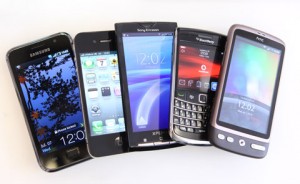 The mobile chipset market is in a state of flux with a number of key vendors struggling, but analysts say the result of the turmoil will be more advanced high-end smartphones and cheaper low-end devices.
The mobile chipset market is in a state of flux with a number of key vendors struggling, but analysts say the result of the turmoil will be more advanced high-end smartphones and cheaper low-end devices.
On Monday, chip maker ST-Ericsson was dealt a blow as co-owner STMicroelectronics decided to exit the joint venture, which leaves its other owner Ericsson scrambling for a way to save it.
This is just the latest sign of difficulties faced by mobile chipset vendors.
Texas Instruments recently said it will focus its wireless market investments on embedded products. And Broadcom has also been struggling in the mobile space, according to Malik Saadi, principal analyst with market research company Informa Telecoms & Media.
One of the reasons ST doesn’t see a bright future in the wireless chipset space is the growing number of major smartphone vendors that want to develop their own components, the company’s CEO Carlo Bozotti said.
One element of Samsung’s success is that the company builds its own processors and other components of its Galaxy products, and others want to emulate that.
LG Electronics and Huawei Technologies are going down the same route, and Apple will also bring more chipset design inhouse, according to Saadi.
If Apple wants to strengthen the company’s expertise in mobile components, either though acquisitions or by poaching staff, now would be a good time, because of the uncertain future many of the vendors are facing.
For smartphone buyers this trend will be a good thing, according to Saadi and Francisco Jeronimo, research manager at IDC.
“It will give the smartphone vendors better control of their products. That will allow for better integration between hardware and software, which will result in a better user experience,” Saadi said.
Besides a better user experience, having more components in-house will also help keep costs down because they don’t have to pay markups to a third party, Jeronimo said.
Fewer chances to make money in the high end will result in chipset vendors focusing more on the low end of the market.
“Look at Qualcomm, for example. It is doing extremely well, but its opportunities in the high-end are limited, because of the Samsung and Apple effect. But Qualcomm has started to push far more aggressively in the low-end of the market with its reference designs ,” said Geoff Blaber, who leads mobile device software research at CCS Insight.
This is a trend that other vendors will latch onto, according to Blaber. That will in turn result in more competition and price cuts, he said.
Price cuts on the component side will make it possible for phone vendors to develop smartphones that cost less than $100 without subsidies, according to Saadi.
Still not everyone will survive these changes, and there will be consolidation in the market.
“We don’t have to wait two or three years for that to happen, it will take place in 2013,” Saadi said.
ST-Ericsson’s future will be decided in negotiations between ST and Ericsson that have already started, Ericsson said.
The transition period is expected to end during the third quarter of 2013, ST said.
ST-Ericsson was founded as a 50/50 joint venture by STMicroelectronics and Ericsson in February 2009. It married ST’s wireless semiconductor division and Ericsson’s mobile platform.
However, since its start ST-Ericsson has struggled to compete. During the third quarter it reported an operating loss of $174 million, which was an improvement over the $224 million it lost during the same period last year.
ST’s exit is the outcome of a strategic review that started more than a year ago, according to the company. The company will now concentrate on sensors, automotive products and embedded processing, it said.





